Feeling overwhelmed trying to get your plastic parts made in China? It’s a common headache – you hear about the cost savings, but then the horror stories of poor quality or communication nightmares kick in. What if you could navigate the process smoothly and confidently?
Getting injection moulding parts fabricated in China involves finding a reliable supplier, providing clear technical specifications (like 3D CAD files and material requirements), managing communication effectively, and overseeing quality control. It’s about partnership and clear processes.
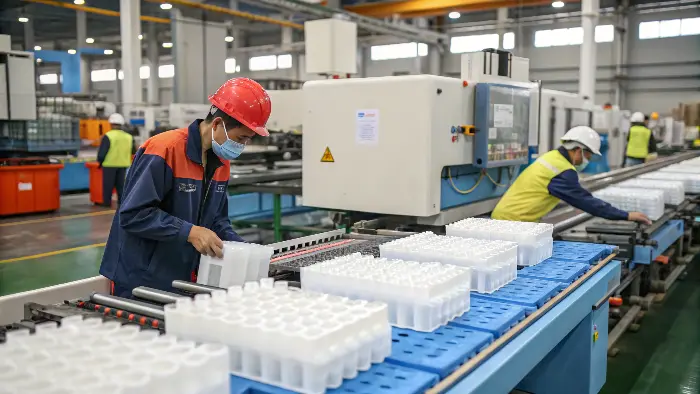
So, you’re thinking about tapping into China’s manufacturing power for your injection molded parts? Smart move, potentially. But it’s not just about finding the cheapest quote. There’s a whole lot more to it if you want things to go right. Let’s break down what you really need to know to make this a success story, not a cautionary tale. I’ve been in this game for a while with CavityMold, and I’ve seen what works and what really, really doesn’t.
How much does injection molding cost in China?
Worried about the true cost of injection molding in China? It’s easy to get lured by low initial quotes, only to be hit with unexpected fees later. This uncertainty can wreck your budget and project timelines.
Injection molding costs in China vary widely based on mold complexity, part size, material choice, and production volume. While generally more cost-effective than many Western countries, getting an accurate estimate requires detailed project specifications.
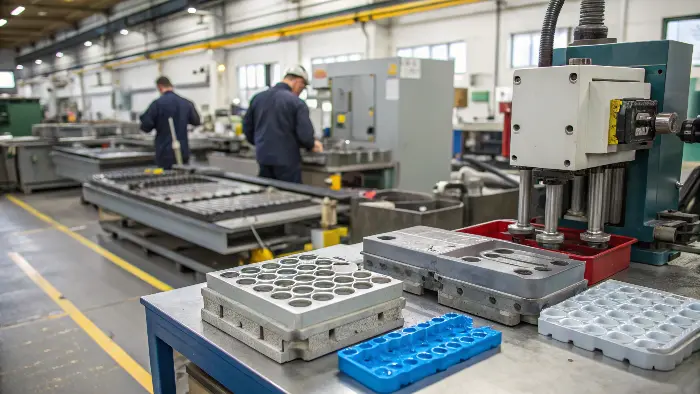
When we talk about injection molding costs in China, it’s not just one single number. I always tell my clients, like Alex who manages complex projects, that it’s a mix of several key things. First, there’s the mold cost itself. This is often the biggest upfront investment. A simple, single-cavity mold might start from a few thousand dollars, but a complex, multi-cavity mold with intricate features or hot runners can go way, way up – think tens of thousands, sometimes more. What drives this?
- Mold Steel: P20 is common for medium runs, but for high-volume or abrasive materials, you’ll need hardened steels like H13 or S136, which cost more. I remember one project where a client tried to save by using P20 for a glass-filled nylon part; the mold wore out way faster than expected! That was a tough lesson.
- Mold Complexity: Undercuts, side-actions, lifters, surface finish requirements (like a high gloss SPI-A1 polish) – these all add to machining time and skilled labor, pushing up the price. We once quoted a mold with multiple sliders and lifters, and the client was surprised by the cost until we showed them the DFM and the sheer amount of precision work involved.
- Number of Cavities: More cavities mean more parts per shot, lowering piece price but increasing initial mold cost. It’s a balancing act. For high volume, it’s a no-brainer, but for smaller runs, a single cavity might be more sensible.
Then you have the part production cost. This includes the raw plastic material, the machine time, labor for running the machine and any secondary operations like assembly or packaging. China’s labor costs are still competitive, which is a big factor. We at CavityMold always provide a transparent cost breakdown, so you see exactly where your money is going. It’s about avoiding those nasty surprises Alex dreads.
How much does it cost to get a part injection molded?
Trying to figure out the actual price tag for each individual plastic part? It’s frustrating when you can’t pin down that per-unit cost, making it hard to calculate your product’s profitability.
The cost per injection molded part is determined by factors like material cost, cycle time, machine hourly rate, and total production quantity over which the mold cost is amortized. Higher volumes typically lead to significantly lower per-part costs.
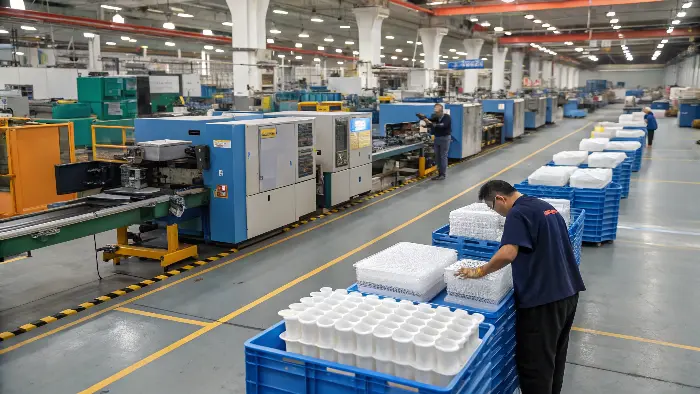
Okay, so we’ve talked about the mold, but what about the cost of each actual part coming off that mold? This is super important for your bottom line. I always explain to project managers like Alex that the piece price isn’t just pulled out of thin air. It’s a calculation.
First, there’s the material cost. Plastics are sold by weight, so the amount of material in your part (plus the runner system, if it’s a cold runner) directly impacts this. Different plastics have vastly different prices – a general-purpose polypropylene (PP) is much cheaper than, say, a high-performance PEEK. And don’t forget, material prices can fluctuate! We always try to lock in prices for a project’s duration where possible.
Then, cycle time is king. This is how long it takes the machine to produce one shot of parts. Faster cycle times mean more parts per hour, which lowers the machine time cost allocated to each part. Things like part design (wall thickness!), cooling efficiency in the mold, and mold quality all play a role here. I’ve seen poorly designed molds add 10-15 seconds to a cycle time, and over a million parts, that’s a lot of extra cost.
The machine hourly rate also matters. Bigger machines cost more to run.
And crucially, volume. The upfront cost of the mold needs to be spread (or amortized) across the total number of parts you expect to produce. If you make 1,000 parts, the mold cost per part is high. If you make 1,000,000 parts, it’s much, much lower.
Let’s say a mold costs $5,000.
- For 10,000 parts, mold amortization is $0.50/part.
- For 100,000 parts, it’s $0.05/part.
See the difference? It’s huge! We always work with clients to understand their volume forecasts to give them the most accurate piece price. Sometimes, a client might say, "Oh, I only need 5,000 parts now," but if they plan for 50,000 in the next year, it changes the whole calculation and might even justify a multi-cavity tool.
Which country is best for injection molding?
Feeling lost choosing where to get your injection molding done? The options seem endless, and picking the wrong country could mean sacrificing quality, blowing your budget, or facing endless delays.
While "best" depends on specific project needs, China is a leading global hub for injection molding due to its competitive costs, extensive manufacturing infrastructure, skilled labor, and rapid production capabilities. However, factors like IP protection and logistics also play a role.
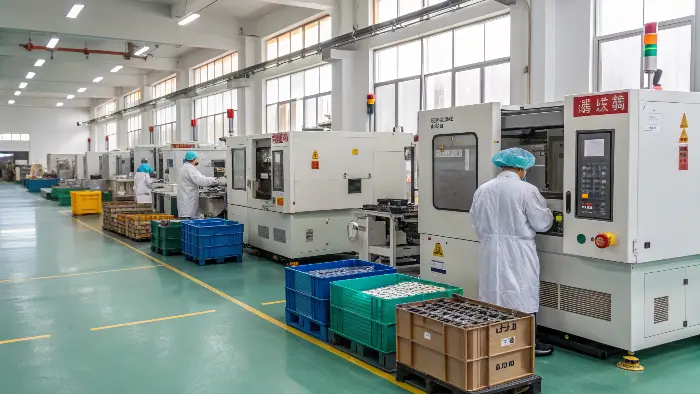
This is a question I get a lot: "Which country is best?" And honestly, there’s no single "best" for everyone. It really depends on what you’re prioritizing. If Alex is working on a high-volume consumer electronics part where cost is king, China is often a fantastic choice. Why?
- Cost-Effectiveness: Generally, mold making and production costs are lower due to labor rates and a highly competitive supplier base. This is usually the number one driver.
- Speed & Capacity: The sheer scale of manufacturing in China means they can often turn around projects, especially high-volume ones, very quickly. I remember a client needing 100,000 parts in a super tight timeframe; our partners in China made it happen when others said it was impossible.
- Supply Chain: There’s a well-established ecosystem for materials, components, and finishing services. You can get almost anything done.
However, let’s not pretend other countries don’t have their strengths. It’s not a one-size-fits-all world.
- USA/Western Europe (e.g., Germany): Often preferred for highly complex, precision molds, or when IP sensitivity is paramount, or when you need very close collaboration and rapid iteration with a local team. Costs are higher, though – sometimes significantly.
- Mexico: Good for supplying the US market due to proximity (USMCA benefits) and lower labor costs than the US, though not always as low as China. Logistics can be simpler.
- Vietnam/Other SE Asian Countries: Emerging as alternatives, sometimes offering even lower labor costs, but the infrastructure and skilled engineering base might not be as developed as China’s for complex molds. I’ve seen some companies have success there, but also some teething problems with really technical projects.
For many projects, especially when balancing cost, quality, and speed, China hits a sweet spot. At CavityMold, we’ve built our business helping international clients like Alex leverage China’s strengths while mitigating potential risks like communication gaps or quality control oversight. It’s about finding the right partner within the best region for your specific needs.
Who is the best mold maker in China?
Searching for the "best" mold maker in China can feel like finding a needle in a haystack, right? You want top quality and reliability, but how do you sift through all the options without making a costly mistake?
The "best" mold maker in China is subjective and depends on your project’s specific requirements. Look for experienced companies with strong engineering, robust quality control systems, excellent communication, transparency, and positive client testimonials.
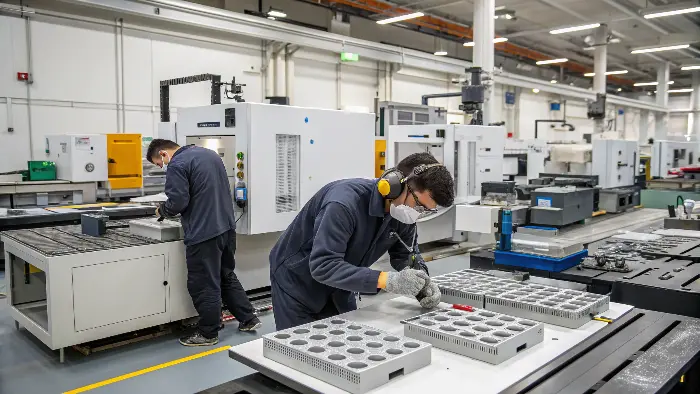
Ah, the million-dollar question! If I had a dollar for every time someone asked me "Who’s the absolute best mold maker in China?", I’d probably have a very nice collection of molds myself! The truth is, there isn’t one single "best" for every single project. It’s more about finding the best fit for your needs. What works for a simple promotional item might not be the right choice for a complex medical device component that Alex might be working on.
So, what should you look for?
- Experience & Specialization: How long have they been in business? What industries do they primarily serve? Do they have experience with the specific materials and complexities your part requires? For instance, at CavityMold, we’ve been doing this since 2009 and have a broad portfolio, from automotive to consumer goods. Ask for examples of similar projects!
- Technical Capabilities: What kind of equipment do they have (CNC, EDM, CMMs for inspection)? What design software do they use (e.g., UG, SolidWorks, Moldflow)? Can they provide DFM (Design for Manufacturability) analysis? This is crucial for optimizing your part for molding and catching potential issues early. A good DFM can save you thousands down the line.
- Quality Systems: Are they ISO 9001 certified? What does their quality control process look like, from material inspection (IQC) to in-process checks (IPQC) to final part approval (FQC/OQC)? Ask for their QC manual! Don’t just assume.
- Communication & Transparency: This is HUGE. Can you communicate effectively with their team? Are they responsive? Do they provide regular project updates with photos and videos? Language barriers can be an issue, so ensure they have English-speaking project managers. We pride ourselves on this at CavityMold; clear, consistent communication is key.
- References & Case Studies: Don’t just take their word for it. Ask for references from similar clients or projects. Look at case studies. A good supplier will be happy to share these.
- Factory Audit: If possible, visit the factory. If not, a virtual audit can also be very insightful. Look at the cleanliness, organization, and the condition of their machinery.
Finding a great mold maker is about due diligence. It’s not just about the price. A slightly cheaper mold from an unreliable supplier can cost you far more in the long run through delays, quality issues, and rework. We aim to be that reliable, high-quality partner you’re looking for, helping you master molding right.
Conclusion
So, getting your injection molded parts from China can be a really smart move for your business. It’s all about doing your homework, understanding the costs, and finding a trustworthy partner like us at CavityMold. With the right approach, you can definitely tap into China’s manufacturing prowess successfully.
